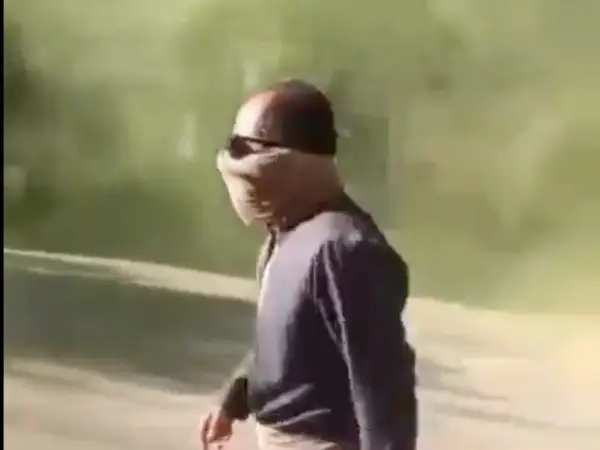The reported government use of a “green gas” against protesters Kurdish cities of Javanrud and Piranshahr Monday has raised serious concerns among Iranians.
Two videos were posted on social media that showed thick green smoke wafting through the streets in Javanrud, a city of around 50,000 in the western province of Kermanshah, amid heavy clashes between stone-throwing protesters and security forces shooting at them. Reports also emerged on the same day of the use of a similar green gas in Piranshahr in West Azarbaijan Province.
The use of an unidentified gas that causes skin irritation, nausea and other symptoms has conjured up memories of Saddam Hussein’s chemical attack on the Kurdish border city of Sardasht, also in West Azarbaijan during Iran-Iraq War (1980-1988) in the minds of many, particularly people in Iran's Kurdish areas.
Saddam’s chemical attack during which mustard gas was used killed at least 130 people and injured 8,000 of the 12,000 inhabitants of the city in 1983. Many victims still struggle with respiratory and other health issues.
“The occupying regime [of the Islamic Republic] is using banned weapons in Kordestan,” a tweet accompanied with an image of CS gas canisters allegedly found in Piranshahr said. The tweet also said CS gas has been banned by the UN Chemical Weapons Convention (CWC) in 1993.
The canister is marked with the word “irritant” only, but posts shared on social media claim these are perceived as chemical weaponry that has been banned.
Iran's Kurdish cities have been at the forefront of the protests that started with the death is custody of the 22-year-old Mahsa Amini from the Kurdish city of Saqqez two months ago.
People in most Kurdish-populated areas in Kordestan, West Azarbaijan and Kermanshah provinces have relentlessly protested and defied government forces since Masha’s death. Security forces have killed and wounded dozens of protesters and bystanders including children in these provinces.
Some chemists and physicians have identified the green gas used in Javanrud and Piranshahr as hexachloroethane, others say it is adamsite (DM), a chemical used as a riot control agent.
Hexachloroethane has been used by the military in smoke compositions, such as smoke grenades worldwide. DM belongs to the group of chemical warfare agents known as vomiting agents or sneeze gases.
Most western countries have abandoned the use of smoke grenades but some activists have accused police of using it against protesters in Portland, Oregon, in 2020.
US-based physician Dr. Mohammad-Kazem Attari told Iran International Tuesday that hexachloroethane is used widely in military exercises in open air but unlike extremely toxic Sarin, VN and other nerve gases, it does not cause death or permanent disabilities.
According to Dr. Attari hexachloroethane can cause serious skin irritation, partial paralysis of facial muscles and fogginess of mind but temporarily. The chemical is also considered as a carcinogen.
“It is mainly used on the streets [for crowd control] to inspire fear due to its color. It is characterized as a nerve gas but is not as dangerous as nerve gases used in wars,” he said and added that the use of this gas is not likely to scare people who are not afraid of firearms used by Iranian regime forces.
Tear gas itself is banned in war according to UN’s Chemical Weapons Convention (CWC) but its limited use is reportedly permitted for law enforcement purposes.
